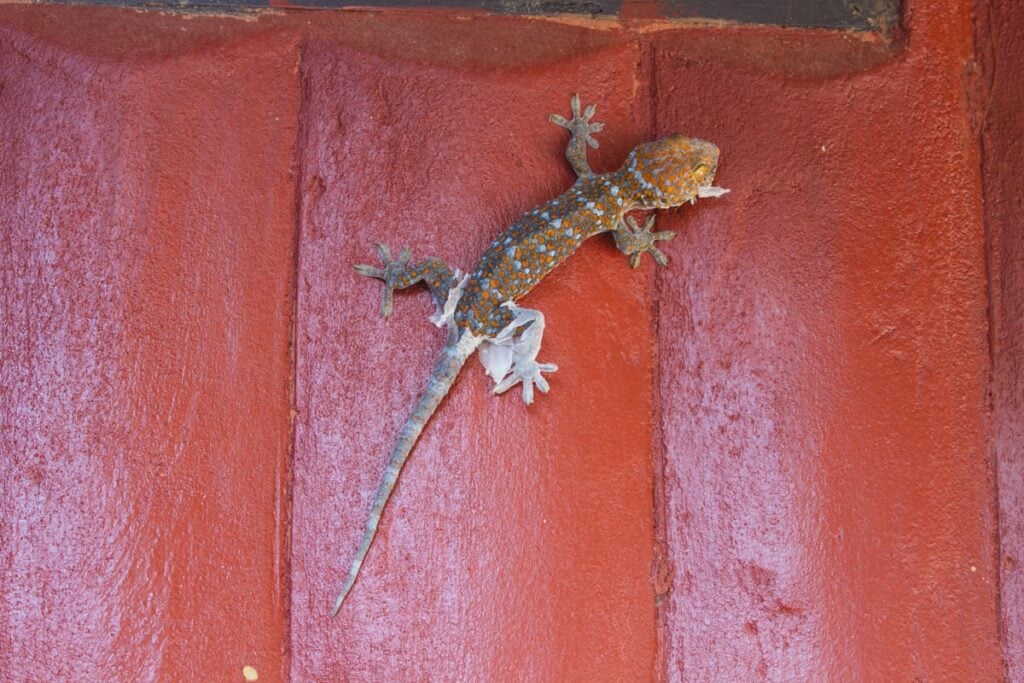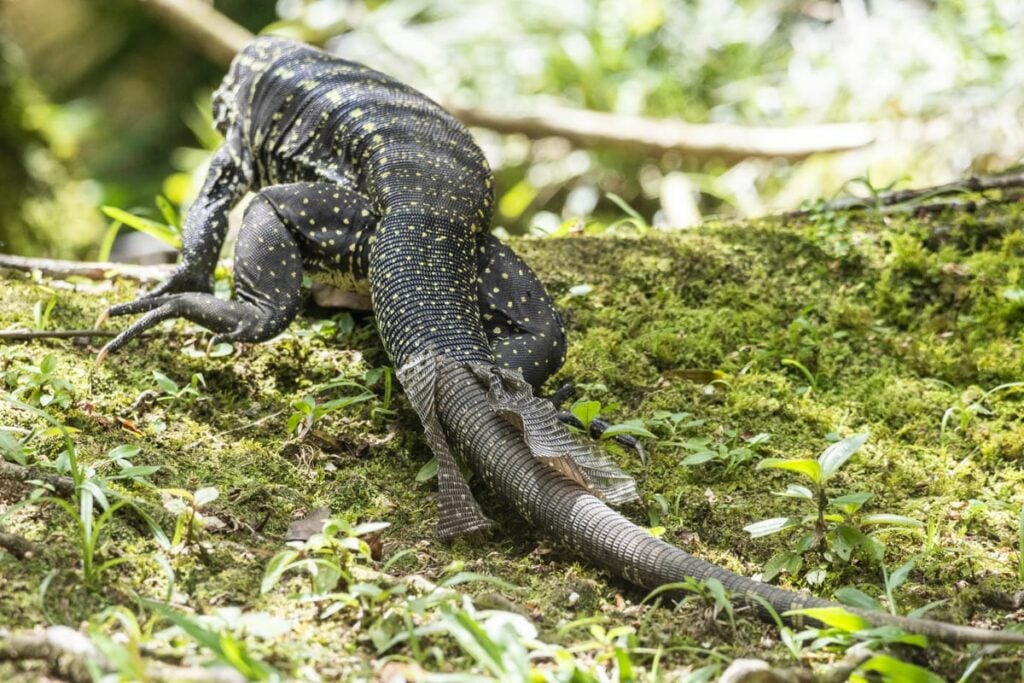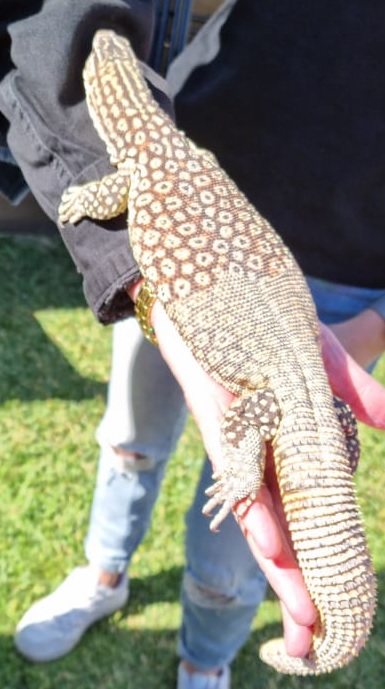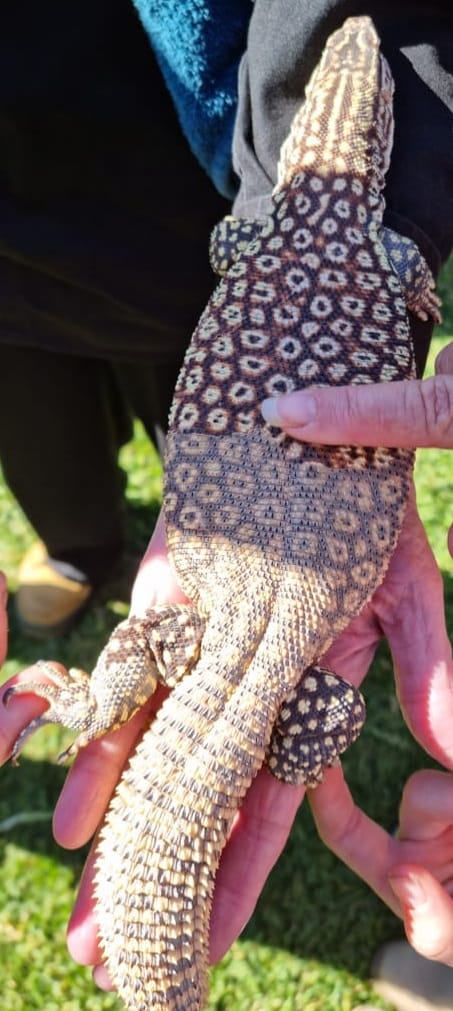Shedding is one of the common natural functions of the skin and a popular property among various animals, whether it’s mammals shedding hairs or reptiles shedding skin. But do lizards shed skin too?
Almost all reptiles will shed their skin at some point during their growth phase, and lizards are no exception to this rule. Lizards’ old skin starts to separate from the new one in small pieces rather than one piece like in snakes. The rate of shedding varies depending on various factors.
If you want to find out more about shedding in lizards and geckos and how you can help your pet during that phase, this guide will walk you through everything you need to know!

How Do Lizards & Geckos Shed Their Skin?
Although all reptiles shed their skin, each species can have a unique pattern, and so does a lizard.
For example, it’s fairly common for snakes to shed their entire skin in one piece, including the scales covering their eyes.
However, the majority of lizards will only shed old and dead layers of cells while leaving the healthy ones intact. As a result, most lizards will shed their skin in pieces or chunks, depending on whether they are ready for shedding or not.
With that being said, a few species of lizards, such as some skinks, geckos, and particular species like alligator lizards, shed their entire skin at regular intervals.
Stages of Skin Shedding in Lizards
Like other reptiles, the shedding process in lizards, also known as “Ecdysis” or “molting”, is split into a few stages, including:
- Resting Phase: The skin is healthy and the scales are attached to the bottom layer
- Early Renewal Phase: Enzymatic reactions occur that result in separating some scales and skin cells from the bottom layer. The skin color starts becoming dimmer during this stage too.
- Renewal Phase: Lymph fluid comes between skin layers to facilitate their separation, creating patches of detached skin. For that reason, the lizard may look a bit puffier than normal.
- Shedding Phase: Patches of detached skin start coming off the lizard. It’s also common among lizards to eat their discarded skin, which helps them replenish some of the nutrients necessary for making new skin.
How Long Does It Take a Lizard to Shed Completely?
The rate at which a lizard sheds off its skin may vary depending on various aspects. Yet, you should expect an average healthy lizard to fully shed its skin within 7 to 15 days.
The interval of shedding varies greatly depending on the age of the lizard and the rate of its growth.
For instance, some fast-growing lizards may end up shedding their skin every couple of weeks while others take longer rest periods between sheds.
Do Lizards Stop Shedding Skin?
Contrary to popular belief, all reptiles will continue shedding their skin throughout their lives, including lizards.
However, as they advance in age, their metabolic and growth rates slow down, so they don’t need to shed their skin as fast as they used to.
In other words, the interval between the shedding periods only stretches further but they still shed eventually.

Factors That Affect Lizards’ Shedding Rate
Certain aspects can speed up or slow down the rate of lizards’ shedding. Let’s have a quick look at them:
Age and Species’ Growth Rate
Lizards grow at different rates, which is why some species may shed faster than others since they hit the fast-growth age (juvenile stage) earlier or stay in it for a longer time.
Nutrition
Shedding is an energy-demanding process and requires plenty of nutrients to generate new skin.
For that reason, lizards with poor nutrition may face problems while shedding. This is also why many lizards end up eating their shed skin.
Environmental Conditions
Since lymph fluid plays a significant role in the process, moisture and humidity are essential for healthy shedding. Ideally, lizards tend to shed easier and faster in humid and relatively warm conditions.
General Health
Diseases, malnutrition, poor handling, and other health issues can impact the lizard’s ability to shed its skin.
For example, mites infections, dermatitis, and other skin-targeting conditions can all impair the lizard’s ability to shed properly.
Why Do Lizards Shed?
Shedding plays a significant role in lizards’ and other reptiles’ growth. This is because reptilian skin doesn’t grow, so they need to generate a new layer of skin that fits their bodies as they grow larger.
Shedding skin also helps them remove any harmful parasites or infections that target the old skin, so it helps in keeping them healthy.
Why Lizards Need to Shed Properly
Keeping your lizard comfortable while shedding is important because improper shedding can result in various health problems.
Incomplete shedding, also known as “Dysecdysis” can cause visible scars on your lizard’s new skin.
Not only that, but it can also disrupt the lizard’s temperature management mechanisms, which makes them prone to overheating.
Additionally, since lizards become irritable during the shedding phase, they usually eat less food per day.
For that reason, improper shedding can extend the duration of the process, causing malnutrition in the long run.

How to Ensure That Your Lizard Is Shedding Properly
Now that you know more about lizards’ shedding, here are some tips to help them out by facilitating the process:
1. Create a Suitable Environment for Shedding
As previously established, humidity is quite essential for smoother shedding, which you can increase by misting the enclosure or sprinkling water on the substrate.
Ideally, you need to keep the humidity level between 55% to 60% so that it’s humid enough for smoother skin but not too uncomfortable for your lizard.
You should also provide them with a convenient spot for shedding, which is typically a humid hideout somewhere comfortable in the enclosure.
Besides the hideout, you should also provide them with a relatively rough surface, such as a clean rock, in their enclosure.
Lizards also feel a little itchy during the shedding process, so the rough edges will help them remove dead skin cells while giving them a good scratch.
2. Keep Your Lizard Well Hydrated and Fed
Nutrition and hydration can massively impact the process, so you should provide your lizard with access to hydrated food and a bowl of water throughout that phase.
3. Give the Lizard a Gentle Bath
Allow your lizard to sit in lukewarm shallow water for 30 to 60 minutes to loosen stubborn skin cells. You can also use commercially available shedding aids that moisturize the skin and make it easier to come off.
4. Don’t Pull the Skin During Shedding
Since lizards shed their skin in patches, they usually have live skin cells near the dead ones. That’s why pulling it yourself can be quite painful and expose them to infections.
Ideally, you should avoid handling the lizard too much for the duration of the shedding process.
5. Only Help Them When the Process is Nearly Over
After about 7 to 15 days, consider giving your lizard a quick overall check to see if there are still any patches of dull skin that are stuck.
Make sure that you soak them first and be extremely gentle while dealing with the lizard’s toes and tails, as they may come off if you pull hard enough.

Wrap Up
This marks the end of today’s guide that shows you everything you need to know about lizards’ shedding.
As you can see, all lizards will shed their skin, which is an essential process for their growth and survival, so you must ensure that they’re comfortable and healthy during that phase.
- Can Leopard Geckos Eat Silkworms? - March 11, 2024
- Do Leopard Geckos Climb? - March 4, 2024
- Do Leopard Geckos Bask? The Answer Will Surprise You - February 21, 2024
